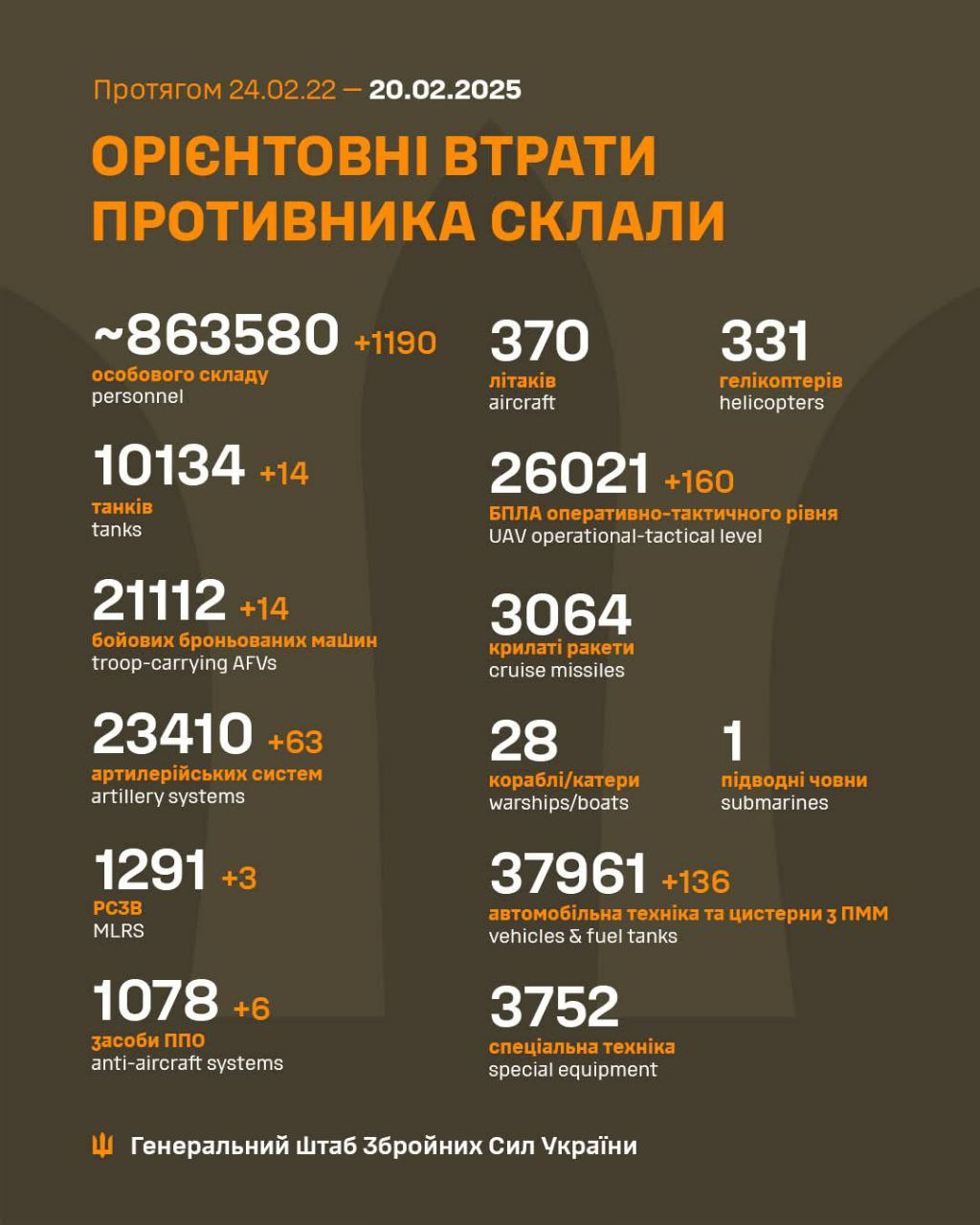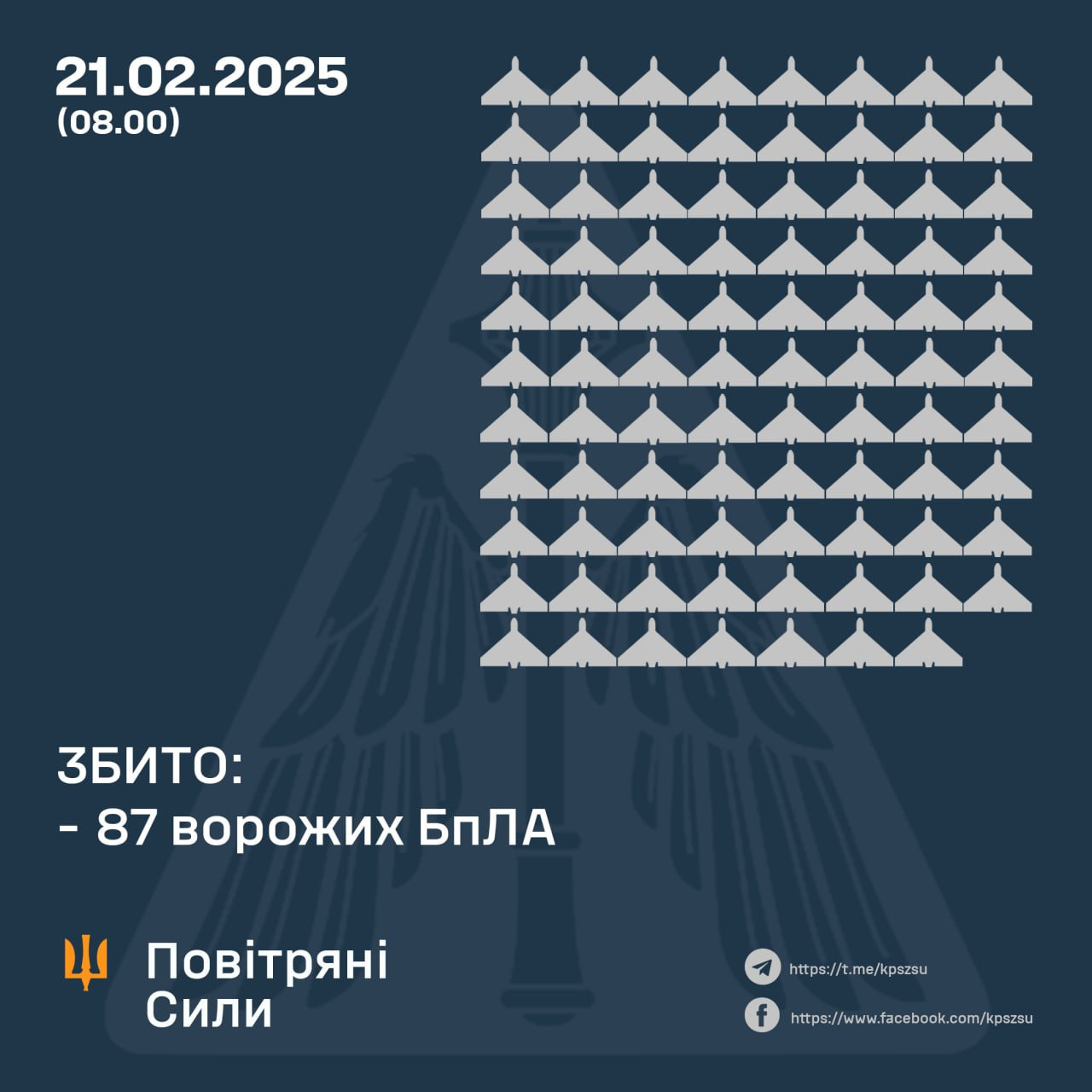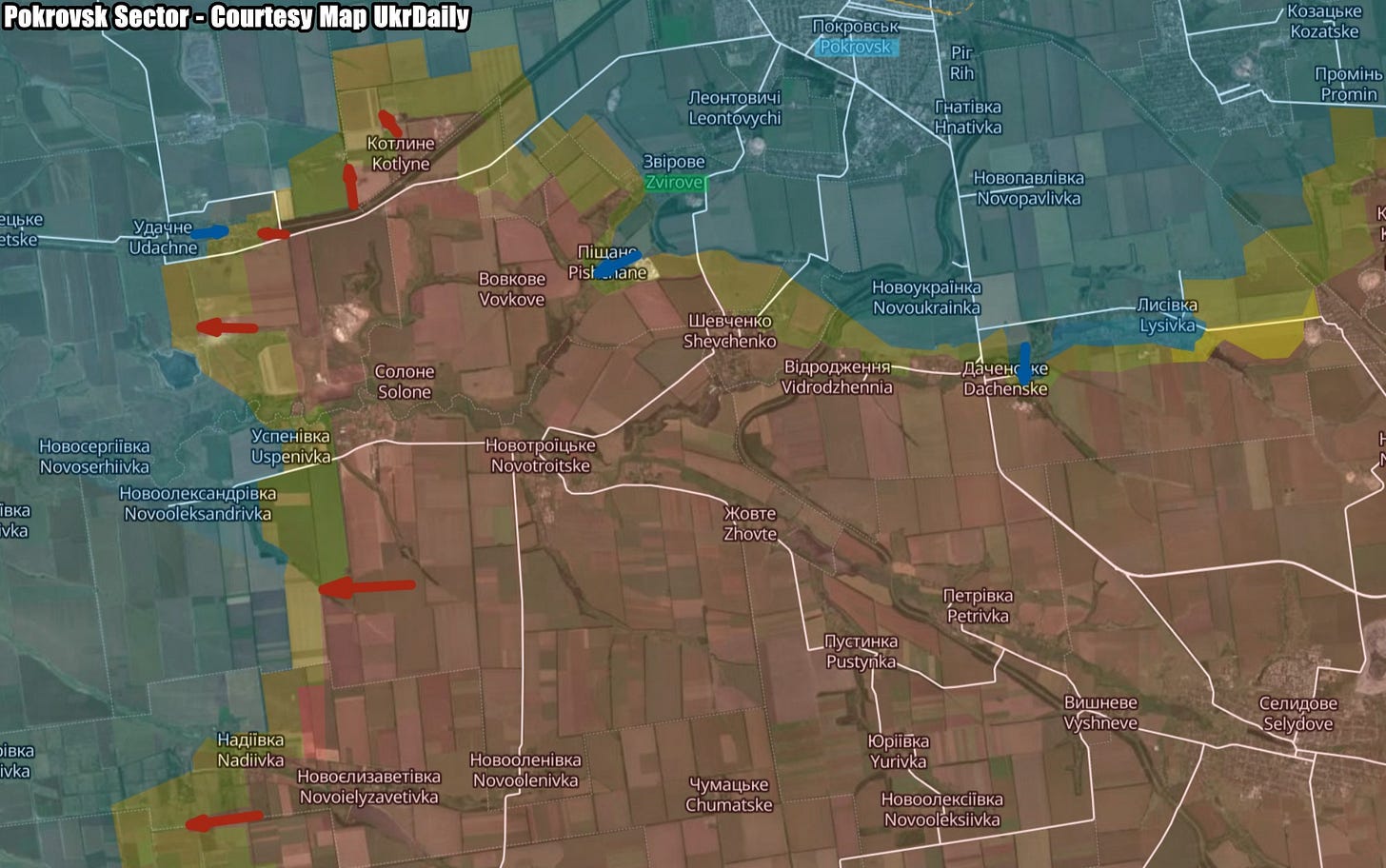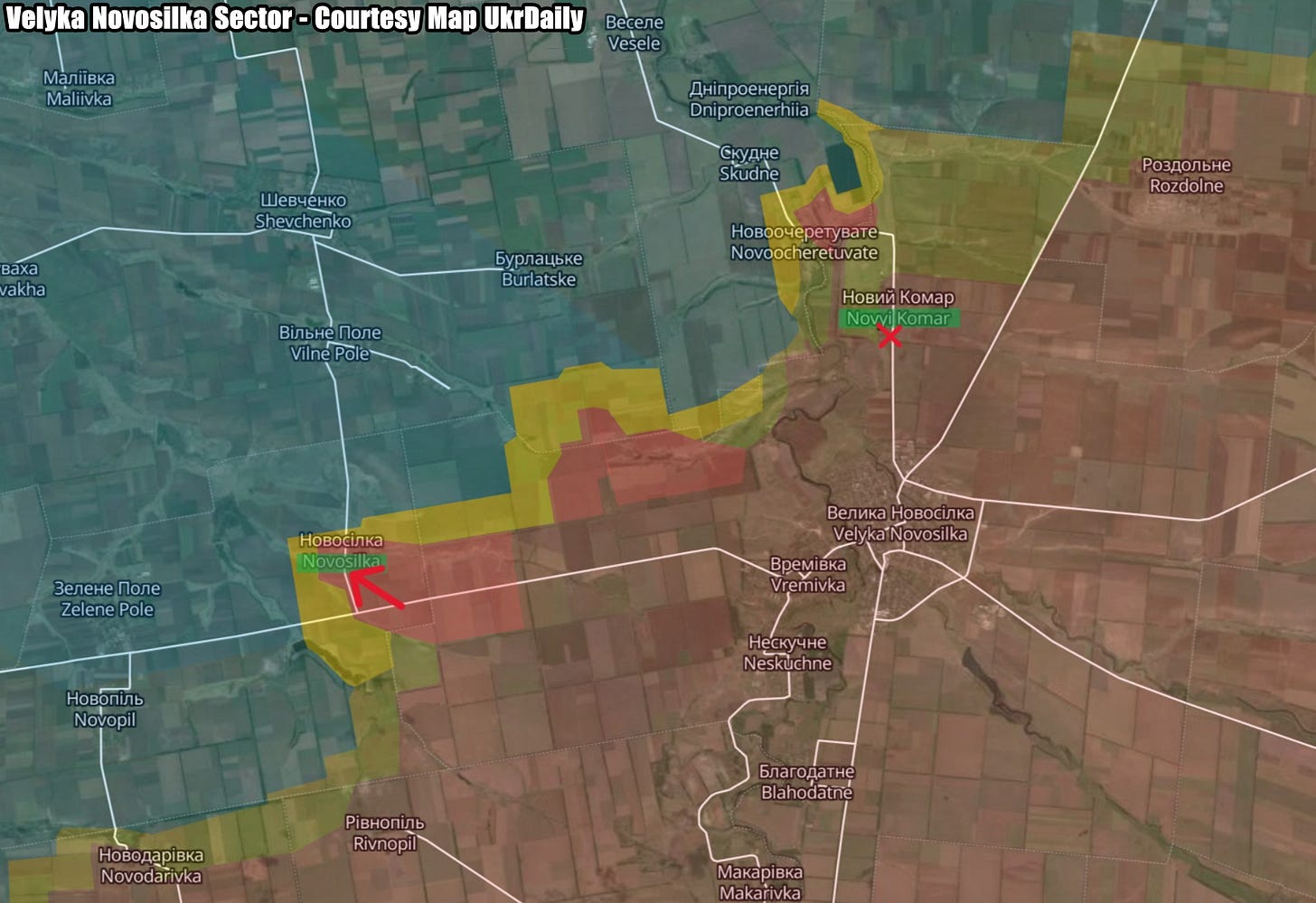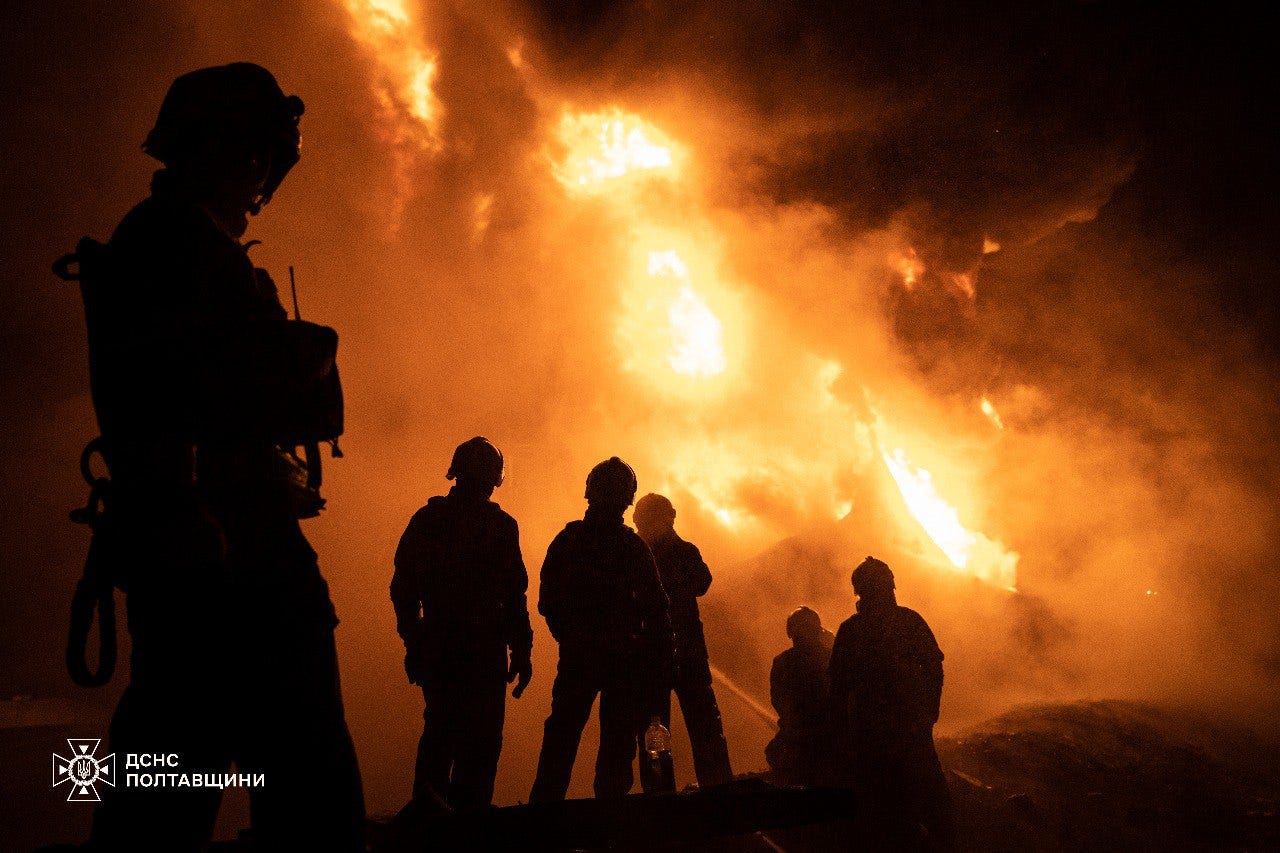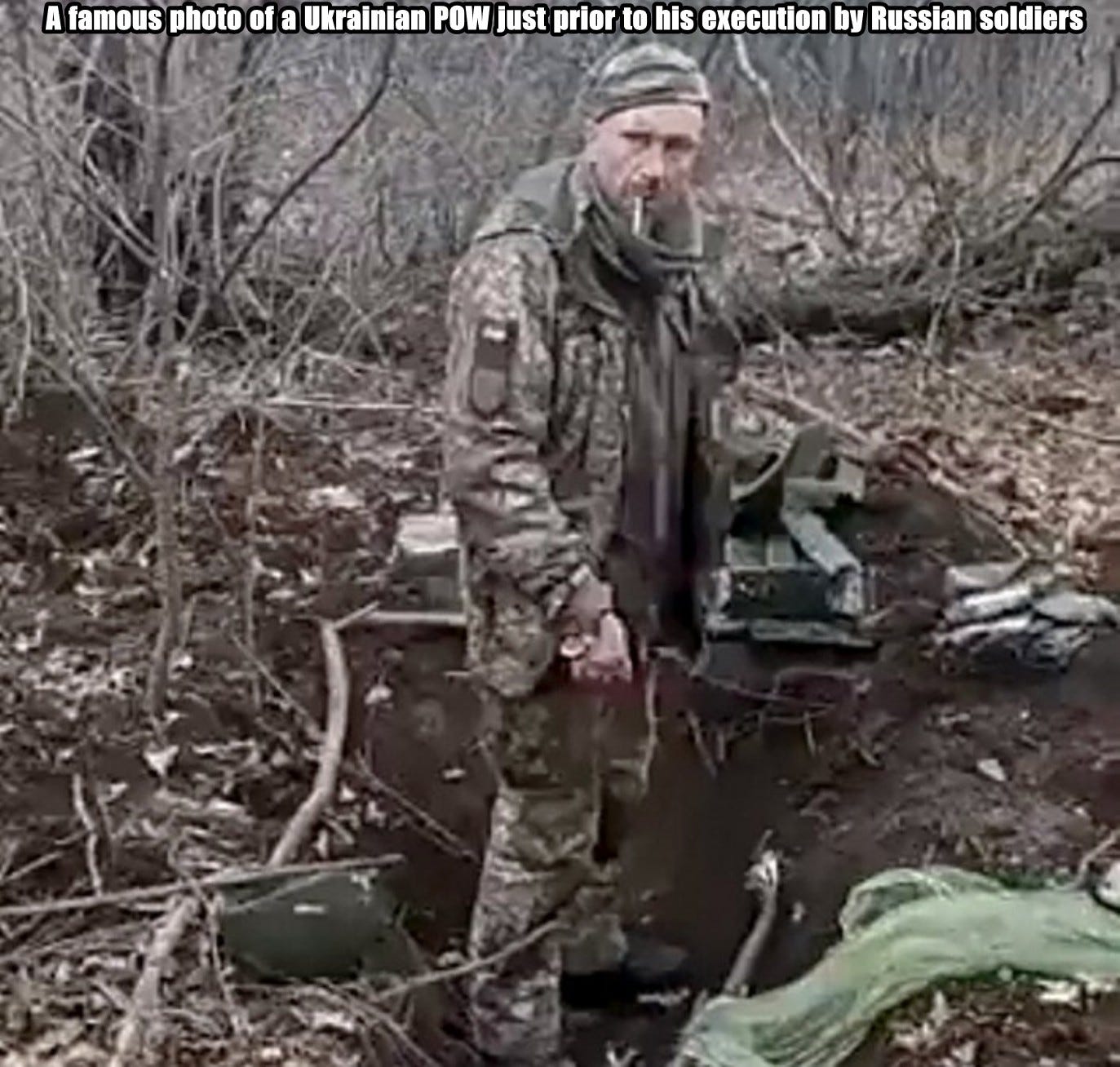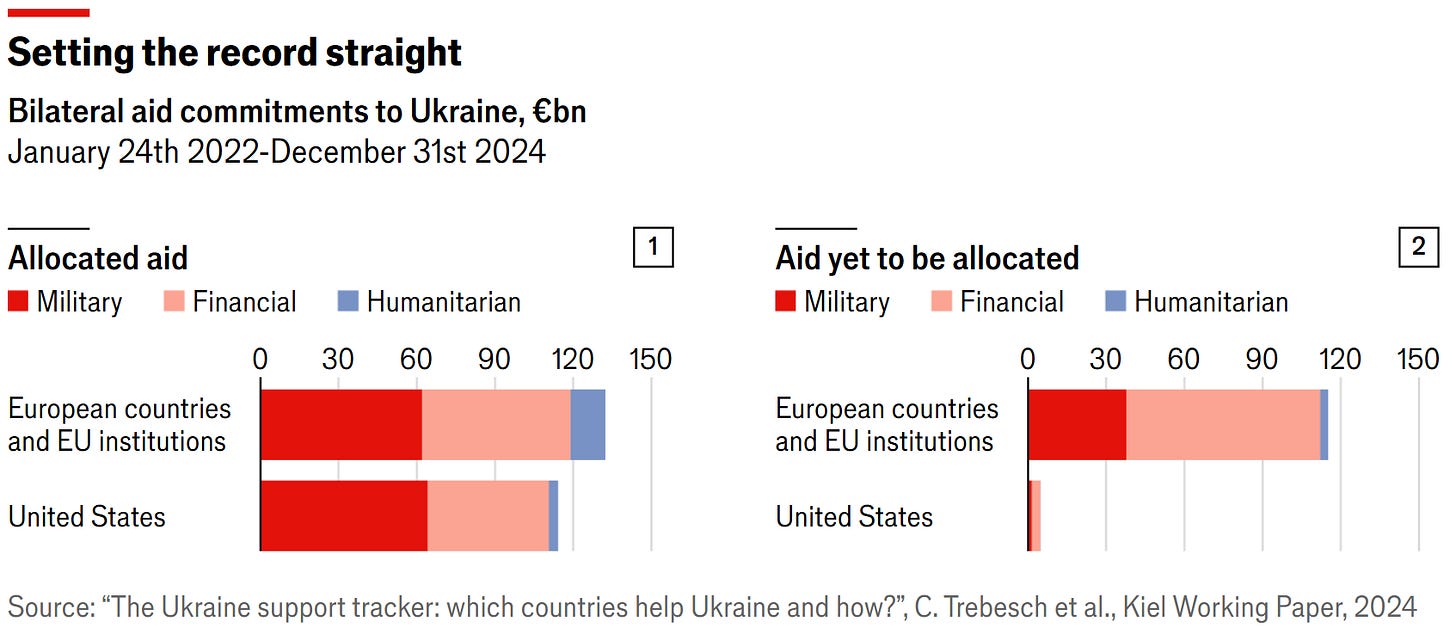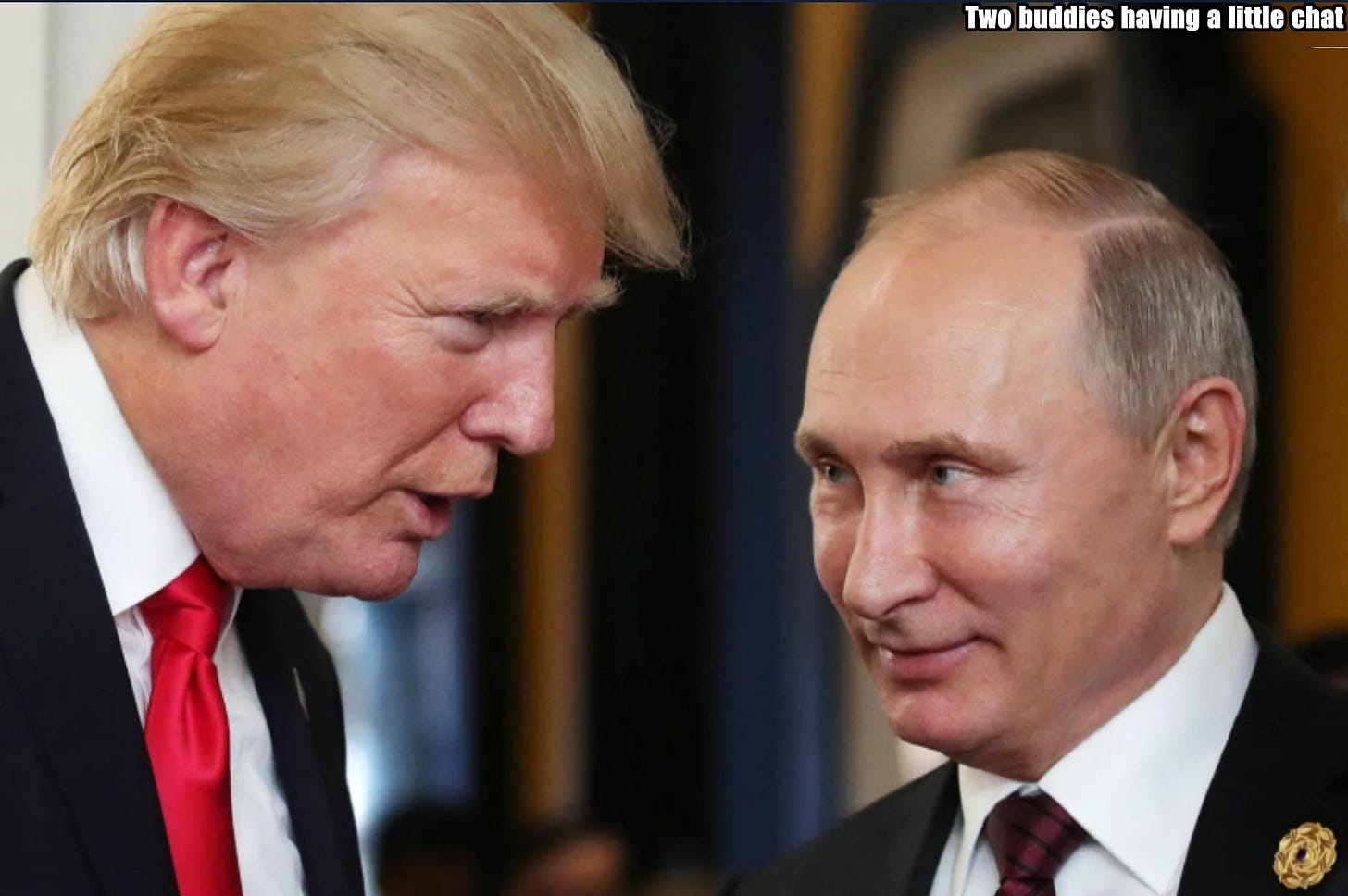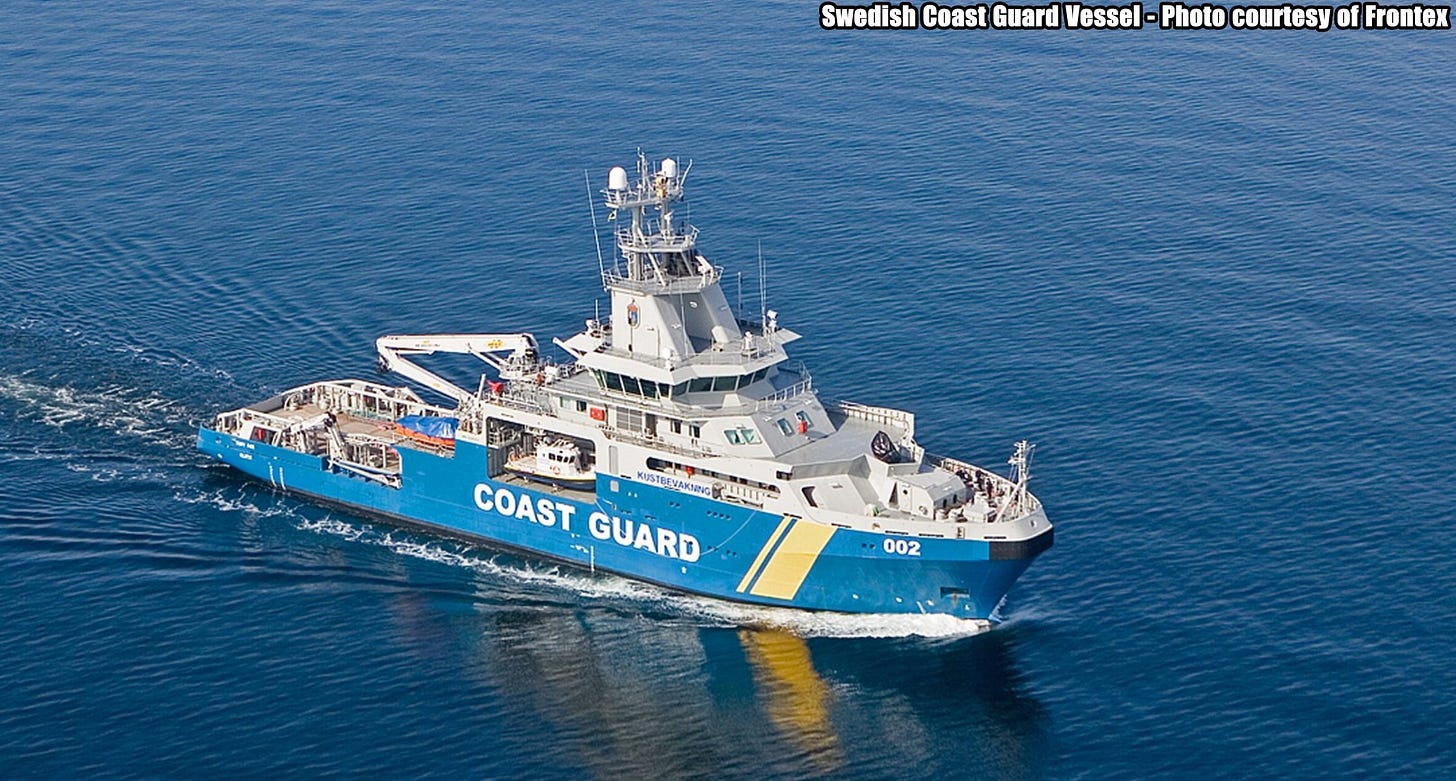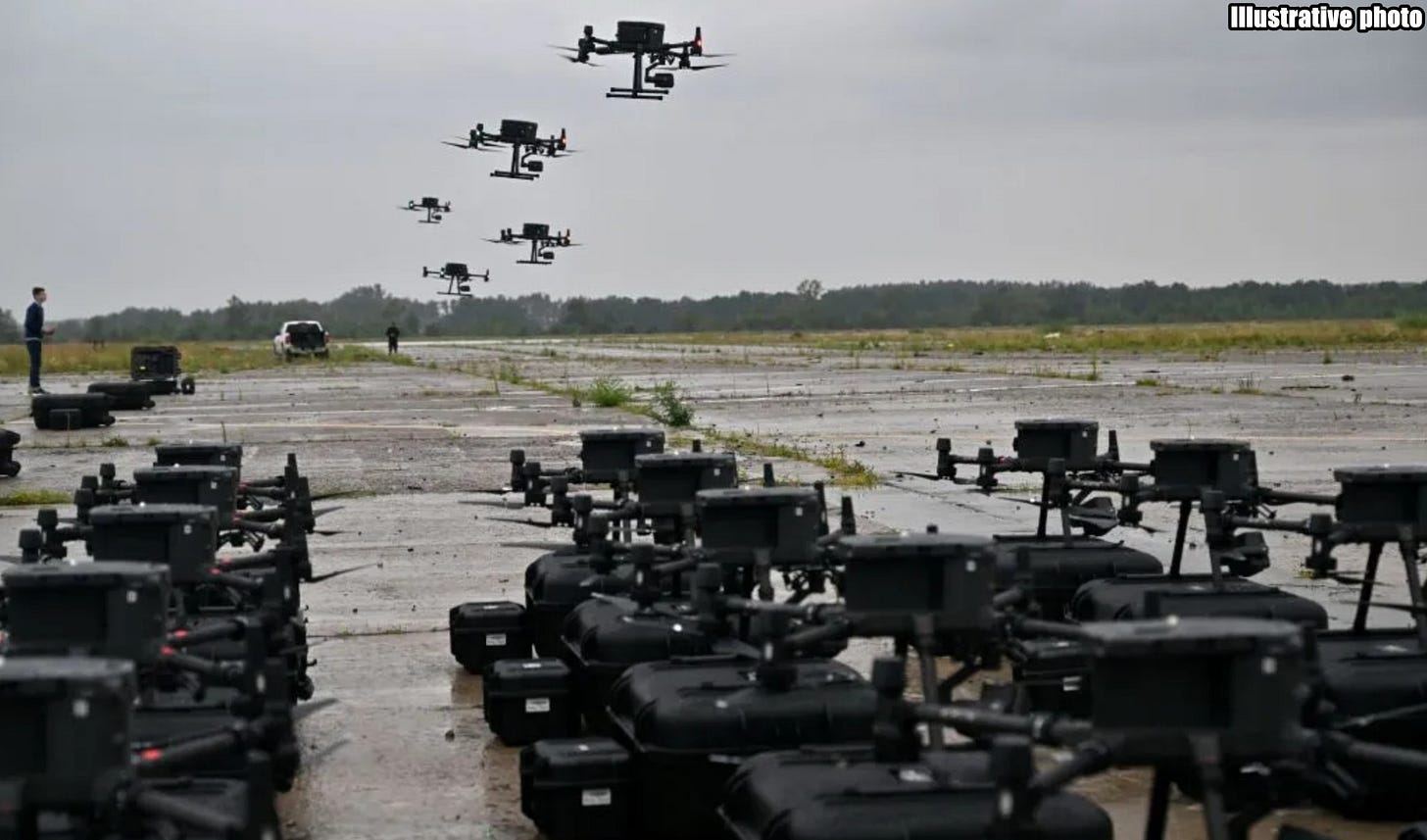Slava Ukraini! In early 2022 I began a Telegram channel aggregating news from a number of sources daily on the war in Ukraine. In June 2023 I began providing a daily draft for the Ukraine War Brief Podcast collecting news from over 70 sources daily, which formed the basis of the script. While the Podcast no longer exists I have continued to make this Brief available for my followers here on Substack for those who wish to keep up with the news from the war.
All the latest news on the Russo-Ukraine War 6 days per week
ALONG THE CONTACT LINE
GSAFU Morning Report
The General Staff of the Armed Forces of Ukraine in its Operational Information update at 08:00 on Feb 21 stated that day 1094 of the full-scale invasion of the Russian Federation against Ukraine had begun.
The situation on the line of combat remains tense in some sectors. Ukrainian defenders continue to actively counteract the Russian aggressor, causing them significant losses in personnel, equipment and technology. Exhausting the enemy along the entire front line and continuing to disrupt the plans of Russian occupiers to advance deeper into the territory of Ukraine.
During the past day, 121 combat engagements took place.
Over the past 24 hours, the enemy carried out 3 missile strikes, 93 air strikes, used 2,650 drones and fired approximately 5,500 artillery shells across the positions of Ukrainian forces and civilians.
Air Force Daily Report
87 ENEMY UAVS SHOT DOWN, 70 DRONES FAILED TO REACH THEIR TARGETS (LOCATIONALLY LOST)
➖➖➖➖➖➖➖➖➖
On the night of February 21, 2025 (from 19:00 on February 20), the enemy attacked with 160 Shahed attack UAVs and simulator drones of various types from the directions: Orel, Bryansk, Kursk, Millerovo, Shatalovo - Russia, and also struck with two Iskander-M/KN-23 ballistic missiles at the Odessa region from Crimea.
The air attack was repelled by aviation, anti-aircraft missile troops, electronic warfare units, and mobile fire groups of the Air Force and Defense Forces of Ukraine.
As of 08:00, it has been confirmed that 87 Shahed attack UAVs and drones of other types have been shot down in Kharkiv, Poltava, Sumy, Chernihiv, Cherkasy, Kyiv, Kirovohrad, Zhytomyr, Vinnytsia, Mykolaiv, Kherson and Dnipropetrovsk regions.
70 enemy drone simulators were lost in location (without negative consequences).
As a result of the enemy attack, the Odessa, Kyiv, Poltava, and Kharkiv regions suffered.
Combat Operations in the Kursk Sector, Russian Federation
The Institute for the Study of War (ISW), a US based think tank, in its Feb 20 Russian Offensive Campaign Assessment reported that Russian forces continued offensive operations in Kursk Oblast on February 20 but did not make any confirmed advances. Russian forces continued ground attacks northwest of Sudzha near Lebedevka, north of Sudzha near Pogrebki, southeast of Sudzha near Guyevo, and south of Sudzha near Kurilovka on Feb 19 and 20.
The Khortytsia operational-strategic group
(Responsible for the northeastern part of Ukraine. )
There have been no major changes to the combat environment since our last report.
The Tavria operational-strategic group
(Responsible for the central-eastern and southeastern part of Ukraine.)
Pokrovsk Sector : Ukrainian and Russian forces recently advanced in the Pokrovsk direction. Russian forces conducted offensive operations near Pokrovsk itself; northeast of Pokrovsk near Zelene Pole and Yelyzavetika; east of Pokrovsk near Promin, Novotoretske, Vozdvyzhenka, and Vodyane Druhe; west of Pokrovsk towards Serhiivka; and southwest of Pokrovsk near Pishchane, Nadiivka, Sribne, and Kotlyne and toward Bohdanivka on Feb19 and 20. Russian milbloggers claimed that Ukrainian forces are counterattacking near Myrne and Zvirove (just southwest of Pokrovsk).
Geolocated footage published on Feb 20 indicates that Ukrainian forces recently advanced in central Zaporizhzhia (southwest of Pokrovsk).
Geolocated footage published on Feb 20 indicates that Russian forces recently advanced in central Zaporizhzhia.
Velyka Novosilka Sector: Russian forces recently advanced near Velyka Novosilka. Russian forces conducted offensive operations north of Velyka Novosilka near Novyi Komar and Novoocheretuvate; northwest of Velyka Novosilka toward Pryvilne and Burlatske; and west of Velyka Novosilka near Novosilka on Feb 19 and 20. Ukraine's Khortytsia Group of Forces stated on Feb 20 that Russian forces conducted an at least reduced company-sized mechanized assault near Novyi Komar and that Ukrainian forces destroyed two tanks and seven armored personnel carriers.
Geolocated footage published on Feb 20 indicates that Russian forces recently advanced south of Novosilka.
The Odesa operational-strategic group
(Responsible for Kherson, Qırım, (also known as Crimea) and the Black Sea.)
There have been no major changes to the combat environment since our last report.
TEMPORARILY OCCUPIED TERRITORIES
Nothing major to report.
THE HOME FRONT
12 killed, 6 injured in Russian attacks against Ukraine over past day.
Russian attacks across Ukrainian oblasts killed at least 12 civilians and injured at least six over the past day, The Kyiv Independent reported citing regional authorities on Feb. 21.
Russia launched 160 Shahed-type attack drones and decoy drones against Ukraine overnight, the Air Force said. Eighty-seven drones were shot down, while 70 were lost without causing damage, according to the statement.
Russian forces also reportedly fired two Iskander-M/KN-23 ballistic missiles against Odesa Oblast, the Air Force reported, without providing details on the consequences.
During Russian attacks against the Nikopol district in Dnipropetrovsk Oblast, two men aged 57 and 73 were killed, and a woman was injured, Governor Serhii Lysak said. Two enterprises, two shops, a cafe, two high-rise buildings, six houses, and other buildings were damaged.
Russian attacks against Donetsk Oblast killed seven people and injured two, according to Governor Vadym Filashkin.
An airstrike against the city of Kostiantynivka killed five people, injured one, and damaged multiple buildings. Two more people were reported killed in Mykolaivka and Vesele, and one civilian was injured in Pokrovsk, according to Filashkin.
In Kherson Oblast, two people were killed and two injured in Russian attacks, said the regional governor, Oleksandr Prokudin. Fifteen houses and a multi-story building were damaged.
In Zaporizhzhia Oblast, a man was killed during a Russian attack against Huliaipole, and a woman was injured during a strike on Bilenke, according to Governor Ivan Fedorov.
SBU: Russia escalates disinformation war against Ukraine.
Russia’s intelligence services have significantly ramped up information and psychological operations (IPSO) in Ukraine, aiming to sow division and fuel unrest, Ukraine’s Security Service (SBU) reported on Feb. 21 via Telegram.
According to the SBU, the number of coordinated Russian disinformation campaigns has sharply increased in recent weeks, with a clear focus on spreading false narratives to incite protests and destabilize Ukrainian society.
Moscow has deployed the full capacity of its bot farms, using fake accounts and controlled online groups—especially on TikTok and Telegram—to push fabricated content. These efforts include:
Fake reports of widespread anti-government protests and street riots across Ukraine.
Calls for mass demonstrations aimed at disrupting public order and undermining the constitutional system.
Cash incentives offered to individuals for participating in protests.
The SBU emphasized that it is taking all necessary countermeasures to neutralize these threats and safeguard national security.
Authorities have urged Ukrainians to remain vigilant and not fall for Russian provocations, warning that Moscow’s goal is to destabilize the country from within.
Additionally, the SBU reminded citizens that any actions aimed at violently overthrowing the government fall under Article 109 of Ukraine’s Criminal Code, carrying a penalty of up to 10 years in prison.
"Ukraine’s heroic resistance to Russian aggression has repeatedly shown that unity is our greatest strength," the agency said. "No Russian disinformation campaign can break our national spirit!"
RUSSIAN WORLD
More proof Russian officers are complicit in the systematic execution of Ukrainian POWs
The Institute for the Study of War (ISW), a US based think tank, in its Feb 20 Russian Offensive Campaign Assessment reported that The Financial Times (FT) published an investigation on Feb 20 supporting ISW's long-held assessment that Russian military commanders are either complicit in or directly enabling subordinates to execute Ukrainian prisoners of war (POWs) in clear violation of international law.
The FT investigation provided additional details and analysis following a significant increase in the number of credible reports of Russian forces executing Ukrainian POWs in 2024 compared to the first two years of the war. FT and experts from the Center for Information Resilience analyzed footage of the executions and used the soldiers' uniforms to confirm that Russian forces were conducting the executions. FT conducted an investigation into footage of a Russian soldier shooting six unarmed Ukrainian POWs and identified the possible perpetrator as a soldier in a "Storm" penal detachment of the 30th Motorized Rifle Brigade (2nd Combined Arms Army [CAA], Central Military District [CMD]), but noted that the situation warrants further investigation to confirm this soldier's involvement. FT reported that the 30th Motorized Rifle Brigade has been fighting near Pokrovsk since Fall 2024, which is consistent with ISW's observations.
FT noted that Ukrainian frontline units are often the primary source of execution reports and drone footage of executions. FT noted, however, that tracking these executions is challenging because the Ukrainian units do not always relay reports of Ukrainian POW executions to their commanders. FT noted that Ukrainian prosecutors sometimes find out about the executions based on footage published online. FT interviewed the cofounders of a project reportedly affiliated with Ukrainian military intelligence who stated that many Ukrainian units do not publish information about executions "because it has become routine" and that there are likely hundreds of instances of POW executions beyond the "dozens" recorded so far.
FT's investigation suggests that more senior Russian commanders may also be complicit in issuing orders to execute Ukrainian POWs. Ukrainian officials opened investigations into 43 executions with 109 victims in 2024, and FT analyzed footage of 30 of these instances with 133 victims. The FT investigation found that Russian forces across the frontline — particularly in eastern Ukraine and Zaporizhia Oblast - are executing Ukrainian POWs, not just a few isolated "rogue [Russian] units."
Global Rights Compliance President Wayne Jordash, who is assisting Ukrainian investigations into POW executions, told the FT that Russia is pursuing a "strategy of criminality" in Ukraine, including by torturing, sexually assaulting, and otherwise abusing residents in occupied Ukraine, and that the POW executions are also part of this criminality campaign. Jordash stated that Russian executions of Ukrainian POWs function to degrade Ukraine's military and security apparatus, leaving Ukraine more vulnerable to aggression.
Jordash noted that international law states that individuals who fail to prevent war crimes are also culpable for said war crimes and that government officials calling for POW executions are violating international law.[6] Jordash mentioned specific instances of senior Russian leaders, including Security Council Deputy Chairperson Dmitry Medvedev and Chechen Republic Head Ramzan Kadyrov, explicitly calling for Russian forces to execute Ukrainian POWs.
Jordash highlighted that Russian President Vladimir Putin praised the Russian 155th Naval Infantry Brigade (Pacific Fleet) for its actions in combat, which is notable because the 155th Naval Infantry Brigade is has been linked to the beheading of Ukrainian POWs and execution of Ukrainian drone operators in October 2024. Forbes attributed beheadings of Ukrainian POWs in August 2024 and summary executions in October 2024 in Kursk Oblast to the 155th Naval Infantry Brigade.
Putin awarded the 30th Motorized Rifle Brigade the "Guards" honorific title in July 2024. FT reported that Putin held highly publicized meetings with two unspecified participants of the Kremlin's "Time of Heroes" veterans program who reportedly executed POWs near Robotyne, Zaporizhia Oblast in May 2024.
The Wall Street Journal (WSJ) recently reported that there is a culture of torture and abuse of Ukrainian POWs detained in Russian penal colonies, and taken together these reports suggest that Russian decisionmakers in higher echelons of the chain of command may be implicitly encouraging, explicitly ordering, or failing to stop Russian executions and other abuses of Ukrainian POWs in a system that seems to incentivize such abuses.
INTERNATIONAL NEWS
Trumps claims on the amount of US aid Ukraine has received debunked.
AMONG THE many complaints made by President Donald Trump is that America has been much more generous than European countries in providing military and economic aid to Ukraine. On February 12th he claimed that America had given Ukraine $350bn in aid, whereas the Europeans had provided just $100bn—and that in the form of loans rather than grants. An investigation by The Economist sets the record strait.
The disparity, he claims, justifies his demand that America should take control of an estimated $500bn-worth of rare-earth and other minerals in Ukraine—not as a means to ensure future support but as back payment for past assistance.
Ursula von der Leyen, president of the European Commission, retorted on February 18th that “financially and militarily, Europe has brought more to the table than anyone else. And we will step up.” Who is right?
The most authoritative numbers are compiled regularly by the Kiel Institute, a German think-tank. Its latest report, published on February 14th, shows that European contributions—individually from governments and collectively from European institutions—outstrip America’s aid.
Start with the grand total (see chart 1 and 2). Countries worldwide have allocated €267bn ($280bn) in aid to Ukraine, or roughly €80bn per year. America remains the single most important donor by a wide margin but European countries, including the EU, have collectively surpassed its efforts, with €132bn in allocated aid compared with America’s €114bn (although America remains slightly ahead on military aid). Add other commitments yet to be delivered or specified and the gap grows yet wider. However, almost 90% of the financial aid from EU institutions has been in the form of loans (albeit with very generous terms). Roughly 60% of America’s financial aid is given as grants.
Our third chart shows how this has cumulated over time. European support has remained relatively stable since 2022, while American aid has been far more volatile. Its support slowed in 2023 and 2024 amid partisan wrangling in Congress, then picked up again with the passage of a new supplemental bill, and accelerated at the end of Joe Biden’s term.
Europe’s biggest donor is Germany, which has provided some €17bn (including financial, humanitarian and military aid and excluding what is channeled through EU donors). Britain is second, with €15bn, followed by Denmark (see chart 4). But Europe’s biggest economies have the capacity to do much more. Annual commitments by Germany and Britain, along with America, work out to just 0.2% of their GDPs. “Aid to Ukraine thus looks more like a minor political pet project rather than a major fiscal effort,” concludes the Kiel report.
Indeed, in 1990 Germany allocated a greater share of its GDP to support Kuwait than it has for a war on Europe’s doorstep. Similarly, America committed significantly more money per year during the Korean, Vietnam and Iraq wars.
As a share of their output, the Baltic and Nordic states stand out (see chart 5). Estonia and Denmark, for example, have committed more than 2% of their pre-war GDP to supporting Ukraine in bilateral aid.
Generally speaking, the closer a country’s capital is to Russia, the higher its aid to Ukraine as a share of GDP (see chart 6). For example, Latvia and Lithuania—whose capitals are both less than 1,000km from Moscow—contributed 2% of their pre-war GDP. Japan, however, provides more bilateral aid than France, Italy and Spain in absolute terms and as a share of its GDP, despite being more than twice as distant from Moscow.
European leaders have been sent a clear message by the Trump administration: “Stark strategic realities prevent the United States of America from being primarily focused on the security of Europe,” as the defence secretary, Pete Hegseth, put it. European countries are already doing more than America to aid Ukraine. If America pulls further funding, they will need to do more still.
Trump sided with Putin 29 times in first month of presidency.
Since his inauguration, US President Donald Trump has aligned with Vladimir Putin 29 times, with the new US policy focusing on closer ties with the Kremlin, Politico reported on Feb. 21.
On Feb. 12, Donald Trump held a 90-minute phone call with Vladimir Putin. After which he praise Putin vociferously:
“I want to thank President Putin for his time and effort with respect to this call,” Trump said afterward. “We both reflected on the Great History of our Nations, and the fact that we fought so successfully together in World War II,” he said. “We agreed to work together, very closely, including visiting each other’s Nations.”
Nearly three years after Russia’s unprovoked, full-scale invasion of Ukraine in 2022, Trump decided it was time to restore direct contact between the U.S. president and Putin, a leader subject to U.S. and EU sanctions and an International Criminal Court arrest warrant for crimes against humanity and genocide.
Donald Trump says Volodymyr Zelenskyy is a “dictator” even though he won a fair election in 2019. But the United States president doesn’t say the same about Vladimir Putin, even though his main opponent died in jail a few weeks before Putin won a rigged election last year.
In the past few weeks, Trump and his team have also undermined NATO, backed far-right politicians in Europe and vowed to hit the European Union with a trade war for its “very unfair” treatment of the U.S. No wonder a growing number of European officials and diplomats think the American president is really on Russia’s side.
The article then goes on to list all 29 times he sided with Putin.
Sweden suspects sabotage after new undersea cable damage.
The Swedish authorities have launched a sabotage investigation after an undersea telecoms cable was damaged in the Baltic Sea, Reuters reports citing the Swedish newspaper Goteborgs-Posten on Feb. 21.
The news comes following a string of cases of damaged undersea infrastructure in the region, with some officials connecting the incidents to hybrid attacks and Russia's "shadow fleet."
The fiber-optic cable running between Finland and Germany was damaged near Gotland Island within the Swedish exclusive economic zone, Sweden's Coast Guard said.
The Finnish telecom operator Cinia described the damage as minor and said it did not impact the cable's functionality. According to the Finnish media, this is the third time the cable has been damaged in a short span of time.
The Swedish Coast Guard said the incident was first recorded on Feb. 20, but it remains unclear when it occurred.
"We take all reports of potential damage to infrastructure in the Baltic Sea very seriously," Swedish Prime Minister Ulf Kristersson said on X.
"As I have already said, these incidents must be viewed in the context of the existing serious security situation."
NATO has ramped up its presence in the Baltic Sea following multiple cases of damaged infrastructure, deploying additional patrol vessels to ward off potential sabotage.
While Russian-linked vessels have been detained in connection to the incidents, some voices in the U.S. and European intelligence community believe them to be the result of simple accidents.
The suspicions nevertheless add to the tensions between NATO and Russia as the West threw its support behind Ukraine in the face of the Russian invasion.
MILITARY & TECH
Ukraine launching faster drone supply model for military.
Ukraine's Defense Procurement Agency is launching a new supply model for delivering drones to the front line within weeks rather than months, The Kyiv Independent reported citing an announcement by Defense Minister Rustem Umerov on Feb. 20.
Kyiv has ramped up domestic drone production over the past year. Various aerial, naval, and ground drones have been developed and often successfully used for reconnaissance, combat, and other tasks throughout the full-scale with Russia.
According to the new model, military units will be able to choose the unmanned systems best suited to their needs. The system also aims to support manufacturers through advance orders, allowing them to plan for scaling up their production.
The model aims to boost transparency in procurement as it establishes clear supply mechanisms and stimulates competition.
The structure is based on the DOT-Chain, an IT system already used by the State Rear Operator (DOT), an agency dealing with non-lethal procurement for the military.
DOT-Chain is designed to streamline and digitize procurement processes while reducing delivery time.
"Together with manufacturers, we are working to ensure that no soldier waits for weeks or months for what they need," Umerov said after a meeting with representatives of 200 drone manufacturers.
Ukrainian Forces Integrate Drone Capable of Reconnaissance, Electronic Warfare, and Precision Attacks.
The Unmanned Systems Forces are advancing their technological edge by integrating the latest unmanned aerial systems into their operations. Training for operators of the V-Bat (MQ-35A) UAV, a cutting-edge reconnaissance and strike drone manufactured in the United States, has commenced at one of Ukraine’s training centers. Defense Express reports.
The V-Bat (MQ-35A) drone stands out due to its versatility and advanced capabilities. A key advantage is its vertical takeoff and landing (VTOL) ability, which eliminates the need for a runway, requiring only a minimal 4×4 meter space for deployment. This makes it highly adaptable for diverse battlefield environments.
With a range of up to 150 km and a maximum flight altitude of 6 km, the V-Bat drone enables deep reconnaissance and intelligence-gathering missions. Additionally, its 10-hour flight endurance ensures prolonged operational effectiveness.
Equipped with high-precision surveillance technology, including a laser-guided camera and an optical zoom camera with 320x magnification, the V-Bat UAV provides critical intelligence for Ukrainian forces. Its GPS-independent navigation enhances resilience against electronic warfare measures. Moreover, its strike capability, allowing it to carry a drone or even a missile, further expands its battlefield utility.
With these features, the V-Bat drone reinforces Ukraine’s commitment to leveraging cutting-edge technology for reconnaissance, surveillance, and precision strikes. As the Unmanned Systems Forces continue their modernization efforts, the integration of such advanced platforms strengthens Ukraine’s operational capabilities and battlefield effectiveness.
That’s it for today’s Brief folks if you would like to keep up with events in Ukraine daily please consider subscribing, it’s free!







